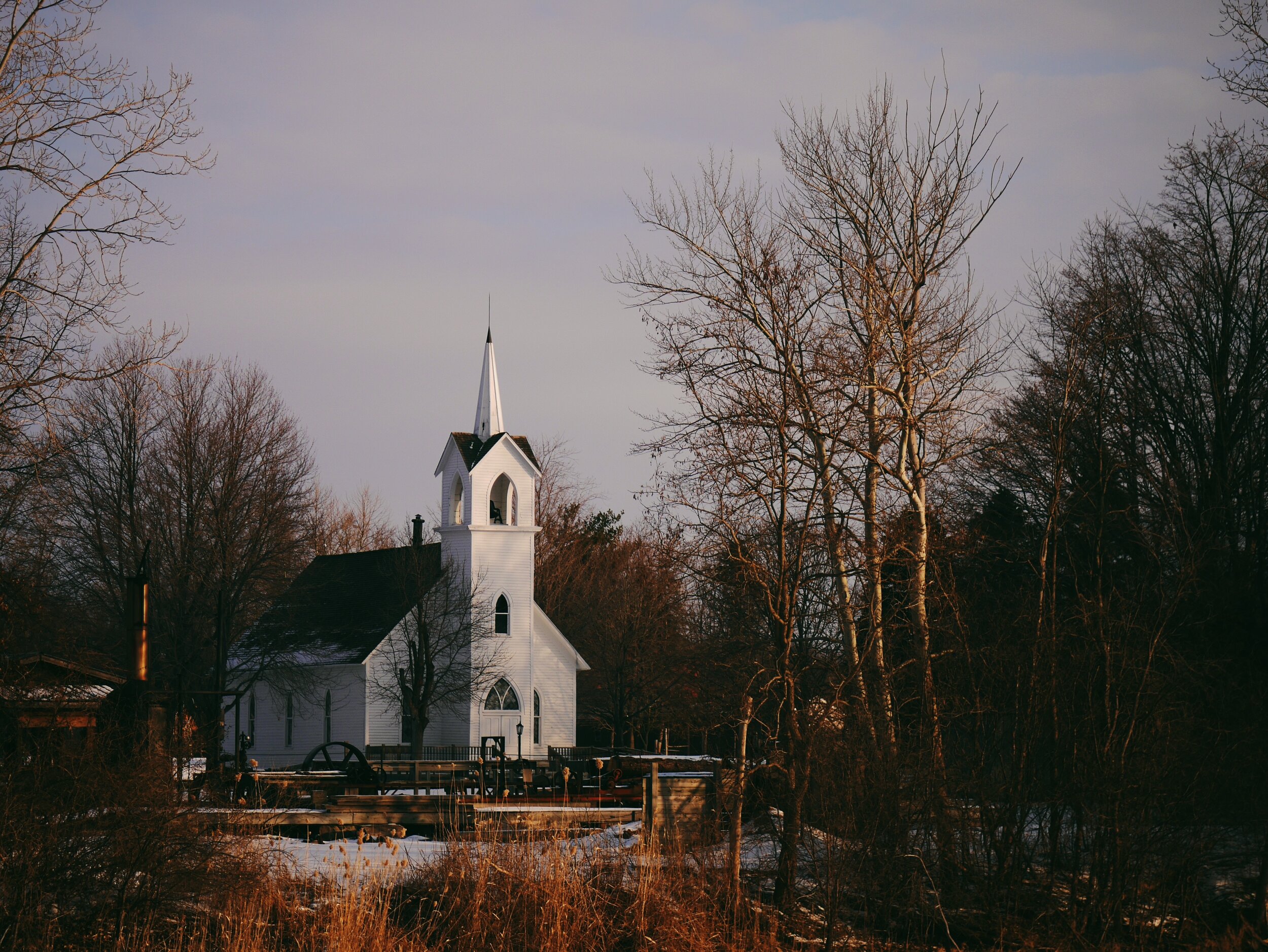Seeking Understanding: Building Partnership Across the Rural-Urban Divide
Stepping into the fray, Daman asks a pointed question: “Is the church becoming polarized too?” Brought to the forefront by recent political events, rural America is once again in national conversation. But what does this mean for the rural church? What does the urban-rural divide look like in American Christianity? And how does American Evangelicalism value or devalue rural congregations and their pastors? These are the questions Daman grapples with in Forgotten Church.
You might say I grew up in rural America. During my elementary school years, my town added its third stop light and approached a population of a whopping 1,800 people. The summer before first grade, I attended Vacation Bible School on the mountain, gathering with just two other children and a leader in the church foyer. While only owning one acre, the farm surrounding my family’s property felt like our own. We eagerly awaited the years the farmer planted soybeans, as it made for smoother sledding hills. It was a difficult choice though, because the other option was sweet corn to eat. Farmer Donnie would pull into the driveway in his pick-up in the late afternoon sun and my mom would get four dozen, sending us kids out to the porch to shuck corn for supper. There is nothing like drying off from a swim in the river, while shucking juicy sweet corn for dinner, knowing Mom also made fresh bread. Did I mention the river? Yes, the Shenandoah is not just a John Denver song, but also the water in which I swam, canoed, and the banks on which I encountered painful poison ivy.
Shenandoah is the name of my home county and the valley in which I grew up. Historically called the “bread basket of the Confederacy,” the Shenandoah Valley of Virginia is an agricultural community, boasting fields of soybeans and corn, apple orchards, and numerous vineyards. Rural Virginians are Republican voting, camo wearing, deer hunting, gun collecting individuals. They drive pick-up trucks, butcher pigs, boil apple butter, drink sweet tea, and fly the confederate flag. This is the stock from which I come and the world I left when I moved to Chicago. It is this context which drew me into Daman’s discussion of the relationship between the rural and urban church.
The most concise summary of Daman’s thesis is a cry for partnership. Tackling a topic sorely in need of attention, Daman is writing from the perspective of a battle worn pastor, having long and faithfully served rural communities, watching the landscape of America Christianity change. He highlights the overemphasis past evangelical movements placed on the urban expression of the church. Not only is rural America a forgotten place, Daman suggests, but American believers have forgotten the rural expression of the body and its unique perspective and contribution to the church at large. The solution—partnership between the urban and rural church, seeking to overcome the divide, and grow to a place of mutual edification and advancement of the gospel. Simply said, yet clearly something is keeping this partnership from being realized.
At the risk of reduction, the greatest stumbling block to constructing partnership between the rural and urban church is misunderstanding, fed by stereotypes and lack of genuine knowledge of the other. This Daman argued for well, at least from the rural perspective, by endeavoring to unpack the context in which the rural expression of the American church dwells, touching on political, economic, and social issues, as well as common misconceptions. One such misconception is the belief that the presence of churches in rural America indicates it has been reached with the gospel. Daman states: “Because rural people tend to be more conservative, both politically and morally, many people assume that rural areas no longer need a strong evangelistic focus. However, a vast difference exists between being religious and following a Judeo-Christian ethic, and being a genuine disciple of Christ.”[1] This point rings true with my own experience. While full of religious people, with churches on every hill, the valley in which I grew up still desperately needs congregations committed to preaching the Word of God and committed believers walking in obedience to it. Additionally, those rural Americans already seeking to follow Christ have just as great a need of biblically and theologically trained church leadership as suburban or urban congregations, a point Daman brings to light.
I am unsure if Daman realizes his argument works both ways. The urban church, and any expression of the body of Christ which differs from one’s own, can be equally misunderstood. Herein lies my greatest critique. While crying out for partnership, Daman veers off the track of the rural/urban discussion into the large/small church discussion. While churches in rural towns of two hundred arguably have a smaller population to draw from than a church plant in Queens, one cannot equate urban with large church or rural with small. As someone who attends a church with an average attendance of approximately sixty in an affluent northwestern neighborhood of Chicago, I can attest first hand that my pastor deals with some of the same challenges my pastor from the Shenandoah Valley encountered. Here, precisely, is where believers must take a step back to listen, analyze, and maybe take a breath before speaking.
“No church can be reduced to its location.””
No church can be reduced to its location. Each local expression of the body of Christ is composed of unique individuals, having experienced a variety of socio-economic, religious, and political backgrounds. One may be tempted to generalize rural churches as dying, small, and traditional. One may also be tempted to color urban churches as large, popular, and progressive. But generalizations only feed stereotypes and increase misunderstandings. The cry for partnership will not be recognized until we set aside our stereotypes, lay down our locality, and listen to the experiences of the “other.”
Quite possibly Daman is misidentifying the root problem in the American church when he identifies it as polarization. Instead, it seems that he is describing the habit of “othering” between believers.[2] However, this habit has no place in the body of Christ. The church is neither rural or urban, neither American or otherwise, but a unified, collective body of unique image bearers who have been brought into the Kingdom of God through the gospel of Jesus Christ. For the unity of His Body, Christ prayed, asking that the interpersonal relationships in the Church would reflect the unity and working together of the Godhead.[3]
Fides quaerens intellectum, “faith seeking understanding,” is a phrase coined by Anselm of Canterbury, a theologian of the early 11th century. In an introductory theology course during the first semester of my life in Chicago, this quote was given to me as a framework from which to study theology. Little did I know it would also become my framework for ecclesiology. How can one seek fellowship with another believer, particularly of a different background or locality, unless first seeking to understand? Raised as a proud southerner, taught a particular bias of civil war history, I had no understanding that the confederate flag, proudly waved on the porches of many homes in my county, was a symbol of grievance and offense to my black brothers and sisters. I had never had a friend that was black, so I didn’t understand. Nor did I have a pressing reason to seek to understand. Stepping onto the campus of a theology school during the height of Black Lives Matter, my worldview fell to pieces as I heard fellow students share their painful heritage. It wasn’t until I sought to understand, until I laid down the confederate flag flying in my own heart, that I could find fellowship. It is only in first seeking to find fellowship through mutual listening and understanding, that partnership can even be considered, something Daman himself is trying to do. Unveiling his heart and experience as a rural pastor, Daman’s cry for partnership is embedded in seeking to be understood.
So what about partnership? What about the rural and urban church joining together for the advancement of the gospel? Understanding leads to fellowship, which in turn leads to partnership, when, like Christ modeled, it is pursued in humility. This past summer I was offered an internship position in a large black church on the south side of Chicago. Thrilled, yet terrified, I met with a black man I respect whom also pastors a church in the city, and hesitantly voiced my concern. “Why would they want me? A girl from the south. A girl who didn’t have a personal friendship with an individual from another ethnicity or skin color until age twenty. Why would this church want me to intern with them?” Gently, kindly, he encouraged me to enter the black church community in humility, seeking to learn and understand. Three months later, I have experienced Biblical, ecclesial partnership in a way I didn’t know possible, in a way that will forever shape the trajectory of my ministry. But only because I entered in humility, seeking to understand, desiring fellowship, hoping to bring my unique giftings to be utilized only if of use to the needs of the congregation.
Once misconceptions and misunderstandings are cleared through the process of listening and nurturing fellowship, the real work of partnering together can occur. This partnership extends from an acknowledgement of both weaknesses and strengths, and an identification of commonalities. Today, the opioid crisis in America impacts countless of families and communities. In her 2018 book, Dopesick, Beth Macy unveils how the opioid crisis is affecting not just urban and suburban communities, but also ravaging central Appalachia. The Shenandoah Valley of Virginia, while classically played off as traditional and idyllic, lies right in the thick of the opioid mess. Is it possible that the urban expression of the body of Christ who have planted churches in neighborhoods wracked by drug abuse, gang influence, and violence (strength through experience), could possibly come alongside the rural church (weakness through inexperience) to battle against the increasing opioid crisis (shared commonality)? Quite possibly the rural church has a unique contribution to offer in return. A theology of space and land, deriving from generational ties to farms, mines, rivers, forests, and even buildings, could be shared with urban believers seeking to reach their communities with the gospel through constructing a sense of place. As Daman so poignantly suggests, the parts of the body, as outlined by Paul to the church at Corinth, are not specific to a local expression of the church, but applicable to the global church as well. The rural church cannot live into the fullest expression of the body of Christ without its urban and suburban sister churches, just as the urban church can benefit from the perspective and theological underpinnings of rural congregations and ministry leaders.
As I step back and consider the past three years of learning from the urban church, what rises to the surface are not so much the differences between my home community and Chicago, but the similarities. Similarities grounded in the brokenness of mankind and its need for redemption through the gospel. Similarities of tired land and decaying buildings crying out to be renewed by the Creator of all things. And within the church specifically, mutual human experiences of joy and pain both challenged and transformed by the participation in the global church of Jesus Christ. The urban church has equipped me to once again enter into my rural community, this time with fresh eyes, my heart ready to listen, my mind ready to understand, and my hands eager to partner within a local expression of Christ’s body. This experience prompts me to agree with Daman, that the rural church too can bring a transforming and needed perspective to American evangelicalism. But this can only happen if you as well are willing to lay down your flag of locality and seek to understand.
About Emily C. Alexander
A first generation college graduate of a rural working class family, Emily C. Alexander recently completed her undergraduate degree in Ministry to Women at the Moody Bible Institute. Emily lives in Chicago where she enjoys long walks admiring architecture and pondering theological and sociological issues. Her hope is to impact the lives of women and the flourishing of the church through thoughtful theological engagement.
Footnotes
[1] Daman, pg. 49.
[2] I am using a definition of othering that is like this basic definition pulled from the Google dictionary. Othering is "to view or treat (a person or group of people) as intrinsically different from and alien to oneself." I was hesitant to use "othering" because some view it as a fairly liberal concept, connected to inclusivity. However, if we look at history, it proves to be a sinful human response to differences.
[3] John 17.20-21







